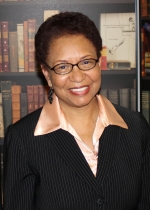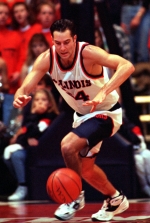For Eric Cox, there's only one place that "puts a smile as wide as Alma’s arms" on the Chicago CBS reporter's face.
The Bruce D. Nesbitt African American Cultural Center had that effect on many.
“The ‘Black House,’ as it was more commonly called, was a home away from home of sorts for myself and many of my peers," says the Class of 2013 grad.
“I reflect fondly on arriving on campus my freshman year and accidentally finding the old, but still welcoming, abode that once sat on 708 South Mathews Avenue.
“I was lost one particular Wednesday afternoon when I saw a group of other African American students heading inside the aged edifice, so I went to see what the commotion was about.
“Once inside, I was soon part of a long line for food.
“It was my first of many appearances at an event known as 'Lunch and Learn,' a weekly series where a guest speaker would stop by the cultural center and engage in thought-provoking dialogue with attendees during the midday meal.
“My initial positive impression of the Black House brought me back to the building on countless occasions to interact with the staff and other students that would frequently stop by during their daily routines.
“I even became part of a collegiate acclimation program put on by the BNAACC geared towards freshmen.
“On top of learning a number of lifelong lessons, the opportunity also put me right in the middle of history as it was happening.
“I, along with dozens of other African American U of I students, was among the many in Washington, D.C. on January 20th, 2009, for the inauguration of our nation’s 44th president, Barack Obama.
“As I look back on how divisive the racial climate on the U of I’s campus felt to some back then, I feel for the black student body of today based on what America’s enduring now.
“Despite efforts towards improving inclusion, the University of Illinois, like many other institutions of higher learning, still has work to do when it comes to making every student feel welcome.
“I believe that’s where initiatives like the Black House play a pivotal role in the success of students who, at times, may feel disenfranchised during their post-secondary experience at Illinois.
“The Black House helped make me who I am today, and I’ll never forget that.
“My hope is that the current, and future, iteration of the Bruce D. Nesbitt African American Cultural Center will continue to provide others with opportunities to learn and grow for many years to come.”










© 2025 The News-Gazette, All Rights Reserved | 201 Devonshire, Champaign, IL | 217-351-5252 | www.news-gazette.com
